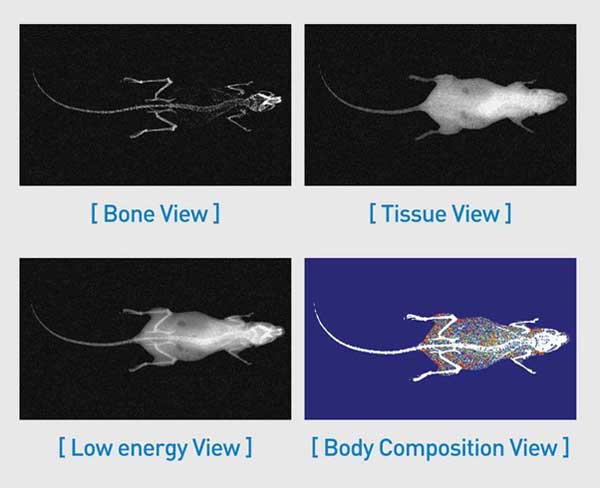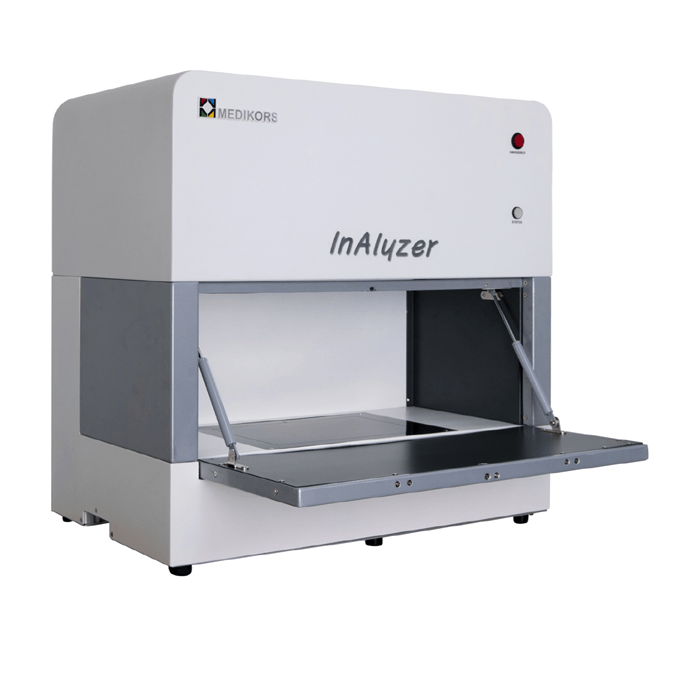Introduction
DEXA, or dual-energy x-ray absorptiometry, is a medical imaging technique used to measure bone mineral density (BMD). It’s commonly used to diagnose osteoporosis and assess fracture risk. DEXA scans are also used to measure body composition (fat and lean mass). This is performed by using two different X-ray energies.
DEXA is recognised as the most accurate technology for measuring osteoporosis and obesity by measuring bone density and body composition.
Why are 2 Different X-ray Energies Used?
DEXA uses both high and low energy X-rays. High-energy X-rays have low attenuation when travelling through a materials, whilst low -energy X-rays can be highly attenuated. By knowing the dual energy characteristics of the material to be analysed, mass values can be obtained.
The accuracy of measuring BMD with a single energy in CT cannot be guaranteed because a single energy X-ray cannot be used to calculate the actual amount of material and only the attenuation can be calculated. Furthermore, due to artefacts that occur while reconstructing CT data obtained by rotation, it is difficult to provide accurate measurement results using a single energy.
What Does DEXA Tell You?
DEXA systems (sometimes called body composition analysers) like the Medikors InAlyzer, provide a number of sets of data. These measurements can be determined in less than 1 minute, minimising X-ray dose exposure, with a high degree of accuracy (measurement error <1%).
| Parameter | Unit | Description |
|---|---|---|
| BMC | g | Bone Mineral Content (Bone Mass) |
| BMC ratio | % | BMC/Total mass |
| FAT | g | FAT content (FAT mass) |
| FAT ratio | % | FAT/Total mass |
| LEAN | g | LEAN content (LEAN mass) |
| LEAN ratio | % | LEAN/Total mass |
| Total mass | g | Total weight |
| BMD | g/cm2 | Bone Mineral Density |
| Bone Area | cm2 | Area of bone |
| Bone Volume | cm3 | Estimated bone volume |
| Fat in Tissue | % | FAT/Tissue, Tissue=FAT+LEAN |
These are derived from the high-resolution X-ray images:

DEXA vs. Conventional Animal Testing
DEXA eliminates the need to perform destructive chemical analyses that are both time-consuming and labour-intensive. The non-destructive nature allows researchers to examine the same animal several times over its lifetime providing more reliable data and reducing the number of animals required for a study.
Summary
DEXA systems like the Medikors InAlyzer provide a fast and convenient method for measuring BMD and body composition. Ideal for studying conditions such as osteoporosis and obesity, DEXA can be easily used to research any medical condition to see the effects on the overall body.
As a non-destructive technique, it can be used to monitor the response of an animal throughout an entire study, minimising the number of animals required to complete a study.

